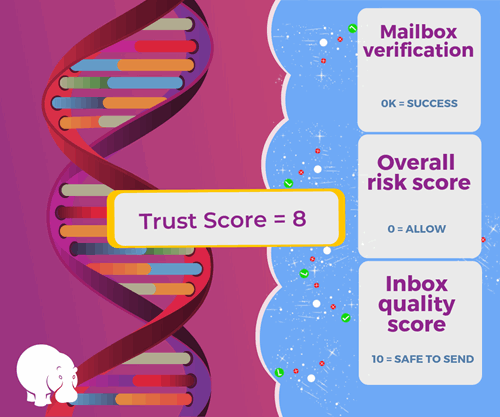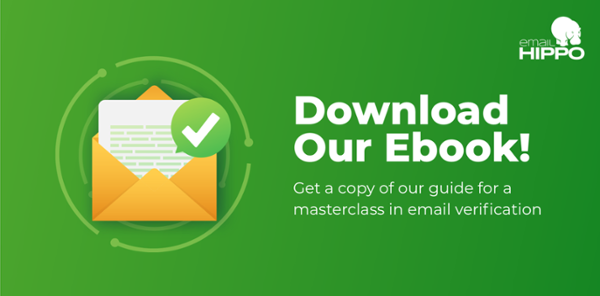The Email Hippo Trust Score - what it is and how it works
Customers using our MORE email verification API tell us they value our Trust Score is as it gives a simple, at-a-glance numeric answer when they check an email address.


The Trust Score is a window onto all the data gathered by the MORE API. In all we return 74 datapoints about every email address; it’s all available to give depth and detail to act on information about any email. For example, using ‘service identification’ to trigger pop-up messages on signup forms if the email address entered is a business or personal one.
How does it work?
We’re often asked how EXACTLY how the Trust Score works, and although we won’t lift the lid on our proprietary code, we’re happy to share the idea behind it and give a breakdown of the key areas we take into account when we reach the final score.
How does the Email Hippo Trust Score work? Can I...? Should I...?
The dozens of checks we perform on every email address split under the umbrella of two key questions; can I...? should I...? Broadly speaking, answers to these two questions help users decide whether an email address is real, and if an email address is trustworthy.

Can I...?
These results tell whether an email address is real. We group them together, give a score out of 10 and call it ‘Send Assess’.
- If you sent an email to the address, would it hard bounce?
- If it reached an inbox, is it likely to be received by a real person?
The data groups looked at here include but aren’t limited to;
- Domain analysis - including datapoints that check out if a domain exists, whether it has dark web connections, if it’s for disposable email addresses, if it appears on block lists, black hole servers or has malicious spam trap connections.
- Mail server status - whether the mail server exists and if it has been set up correctly. Apart from the fact that a mail server has to exist in order for email addresses to be checked and incoming mail received, a badly configured mail server can be vulnerable to being hacked or used for fraud.
- Syntax - email addresses have to conform to standard formats and syntax checks are very basic, but important ways to check whether an email address is real.

Should I...?
These results help protect businesses. They tell whether it’s safe to accept the email address and engage with it. The umbrella term we use is ‘Spam Assess’ and again, it’s scored from 0 - 10.
Spam Assess focuses on the email address in detail. Just because you can send to it, should you? Numerous components are checked out here and each one is scored. Here are some examples;
- Domain score - is it a free provider? Is there gibberish in the domain name, is it a disposable email domain?
- Format - what are the characteristics of the prefix or suffix content? An example, the prefix might contain gibberish or the suffix contain numbers.
- Profanity - speaks for itself - and we check in many languages!
Once the Send Assess and Spam Assess scores are known, results are grouped and scored with a weighting system that’s based on knowledge and experience. Score within this process include the Inbox Quality Score and the Overall Risk Score. This is reached by combining weighted scores (which can be positive or negative) for each datapoint, as well as checking relationships across results.
We’ve been validating emails for a decade, which makes us ancients in email validation. Everything we know about email addresses goes into the maths and mixing of the Trust Score. Some results are like massive poker ‘tells’, others are more subtle, and in combination they make up a picture that indicates a likely outcome.
The process of creating a Trust Score is our IP so it’s not something we’re going to share entirely. We’re always happy to get more into detail with customers who need to get deep into our API as they decide how to manage responses. It’s interesting to learn how email address validation gives insight into the behaviour of our customer’s customers.

How long does it take to get a Trust Score result?
It typically takes less than half a second to check an email address and run it through all the points and calculate the Trust Score. All that data and knowledge boils down to a number between 0 and 8, where 0 is totally untrustworthy and 8 is for an email address that is good.
Where to see Email Hippo Trust Score results
The Trust Score is visible to customers using the API or checking emails through their dashboard.
- Using the MORE email validation API - the Trust Score results are returned in the API
- Individual email checks on your dashboard - you’ll see the Trust Score when you click for more detail about any result
Technical documentation : Trust Score https://api-docs.emailhippo.com/v3/data-dictionary.html#email-hippo-trust-score
Want to know more?
Diving deep into the MORE API and want to learn more about the scoring? Contact us through hello@emailhippo.com.










